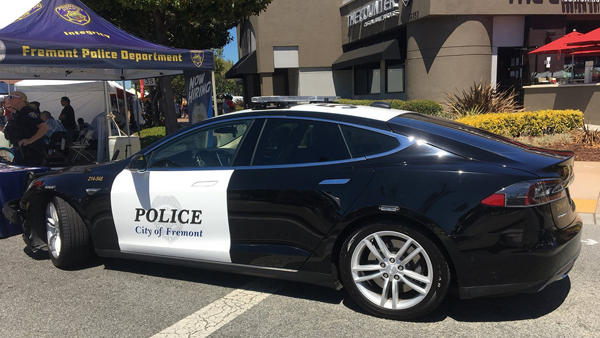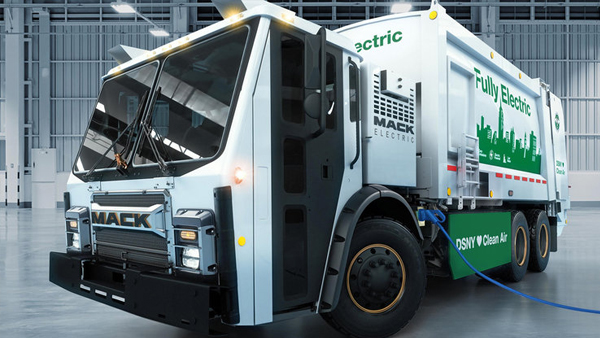To combat climate change, electrification must expand beyond the personal or family car to vehicles used throughout the transportation sector. That’s beginning to happen. Governments and many corporations are supporting the EV market with purchases as part of broader climate strategies. New York City has been a leader with 2,000 EVs in its fleet of 25,000 vehicles; like New Jersey it has set a goal of an all EV-fleet by 2040. Corporations, particularly utility companies (with a bit of self-interest), have invested in growing EV fleets and set up chargers for their employees.
But significant use of EVs for more than shuttling people from office to office or getting around town is still a way off. The Tesla plant in Fremont, California, helped equip an EV patrol car for use by the local police department—one of the first. Another Tesla is being used by Victoria Police in Australia. Inspector Stuart Bailey told the Herald Sun newspaper that the Tesla is “the fastest car in our fleet … I can see in the future our entire fleet [going] electric.

A Freemont police department Tesla Model S. Freemont PD
Other uses of EVs are lagging. Despite a clear need, very few of the vehicles ride hailing companies like Uber and Lyft use are EVs. Once thought to reduce emissions by replacing many private auto trips, ride hailing was found by the Union of Concerned Scientists to produce 69 percent more carbon emissions because they’re being used to replace walking, biking and transit trips rather than promote carpooling.
While trips on Uber, Lyft and other ride-hailing apps are growing rapidly, especially in urban areas, the companies are still losing money. They have announced plans to expand electrification and, in some cities, have offered subsidized EV rentals to drivers or added a small rate increase for drivers using EVs, but the impact has been limited. In January, London added a clean air fee to trips, with plans to use the money collected to subsidize purchases of EVs by ride-hail drivers.
Electrification of ride hailing could rapidly change, however, if and when automated vehicle technology, which is being developed almost exclusively for use on EVs, becomes street-ready. Ride hailing companies are eager for the technology, offering a clear path to profitability without the expense of drivers. Their drivers are likely less enthused.
Electrification of other types of vehicles show promise but is also at the early stages. The first electric delivery trucks are just hitting the streets in significant numbers. In September 2019, Amazon boosted the market with an order of 100,000 electric trucks from Rivian, and in January 2020 UPS ordered 10,000 trucks from start-up builder Arrival. Both companies invest in the truck makers.

A Mack LR battery electric vehicle (BEV) unveiled at WasteExpo 2019. Volvo Group
Larger, long-haul trucks are still at the concept stage but are being pursued by all major manufacturers. In January, New York City received its first Mack electric garbage truck for testing.
Electric buses are further along. In 2019, about 17 percent of the worldwide bus fleet was electric, but 99 percent of those were in China, with nearly half a million in operation. In the U.S. and Europe, governments are seeking to catch up, supporting or mandating their purchase. California wants a full electric bus fleet by 2029.
Electric buses offer advantages for cash-strapped transit agencies, with significantly lower operating and maintenance costs. They also offer a way for low income communities, with bus-heavy ridership, to participate in and benefit from electrification—including reduced particulates and other pollution affecting their neighborhoods. But for transit agencies they also have significant up-front costs including the need for new charging systems.
Tackling the electrification of buses, diesel trucks, and other larger vehicles can contribute greatly to meeting climate goals. Together with airplanes, they contribute 40 percent of carbon emissions from the transportation sector (with the remainder from passenger cars and light duty trucks). ♦